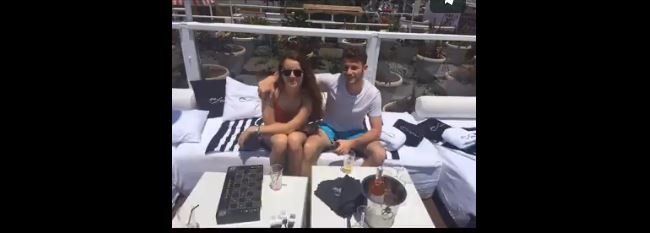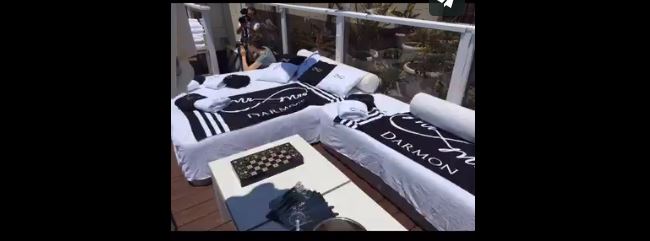Equity Portfolio
Quantitative strategies
Market neutral
1 Investment overview
1.1 Investment strategy:
·
Equity Market neutral (+/- 10% net Delta-Beta)
·
Systematic and quantitative (proprietary models)
·
Low (daily rebalancing) to mid frequency (10
days average holding position)
·
Average Return 10 to 15% - SR = 2.5 to 3 –
portfolio running lived for the last 6 years on the buy side.

1.2 Investment approach:
·
Quantitative and disciplined investment process
·
Qualitative investment methodology and
Systematic risk management
1.3 Investment universe:
·
Underlying : stocks and indices
·
Product : cash and index futures (90% of the
portfolio), only listed and highly liquid products
·
Region: Europe (85%) and US markets (15%)
Liquidity : Highly liquid underlying (Portfolio liquidity ratio:
less than half a day) – Portfolio highly scalable 2
1.4 Investment Process :
·
My portfolio is built around uncorrelated
systematic strategies classified in 2 pockets :
·
Relative value (85% of the portfolio)
·
Opportunities (15% of the portfolio)
·
The portfolio is market neutral : very little
net delta-beta (though less 10% on the whole portfolio).
·
The process is quantitative and systematic :
each of the strategies is quantitative driven, following its own signals and
indicators. Between them, there is little to no correlation.
·
Risk management is at the core of my portfolio
management, following a disciplined risk management per position and for the entire
portfolio. A risk reduction process (position sizing down) is triggered in case
of drawdowns.
·
A relevant ratio VaR utilization per profit
target is maintained in order to optimize our risk utilization. We are running
70% of our VaR limit on average to have a risk buffer in distressed markets to capture
the best opportunities.
·
Risk parameters used on the portfolio are a VaR
(99%, 1Y historical) capped at 1,5% of the NAV, stress test (-5%, -10% Spx) and
10% net Delta-beta limit of the NAV. 
2. Universe
The portfolio is solely focused on:
? Equities
?Exclusively Single stocks, ETF and
indices
? Universe : Europe and US
?80% Europe /20% US repartition
?Strategies run on a geographical area
/ index basis
? Highly Liquid Stocks and futures ?Stoxx
600 - SXXP in Europe
?SPX, Russel 2000 and Nasdaq in the US
?Top
European futures
?Top US futures
3. Alpha Combination
• My Alpha stems from focusing on
the final product, ie the portfolio
I have built a multistrategy
quant portfolio, adopting the multi manager/ funds approach
4. Portfolio Construction
•the alpha generation comes from combining:
•Portfolio construction: Focusing
on a portfolio not just combining a mix of profitable strategies
•Strategies selection: 2 pockets
a strong core long/short quant pocket and a smart opportunistic one
•Strong individual strategies are
selected with the best risk adjusted returns for the portfolio
•the focus is therefore on
volatility and drawn-down of the portfolio
•Focusing on cross-strategies
correlation, notably during their respective draw-down and high volatility
periods
•Back testing them on a 15 years
horizon basis and have run them live for more than 7 years on the buy-side
5. Strategies Selection
5.1 Relative value: Quantitative long / short equity (80% of the
portfolio)
Composition: Some example of the independent and uncorrelated
sleeves rebalanced daily to bi monthly
·
Daily news scoring models on European Single
stocks within SXXP Index members
·
Multi fundamental factors model on European and
US Single stocks rebalanced weekly
·
Basket of 100 equally weighted single names long
versus basket of 100 equally weighted short (Cash)
·
Multi technical factors model on European and US
Single stocks rebalanced weekly
·
Mean reversion and technical models on blue chip
European single stocks rebalanced weekly
5.2 Opportunities (20% of the portfolio)
Methodology:
This pocket is driven by
quantitative triggers and is not always fully invested. The approach is based
on quantitative indictors while seeking asymmetric risk/reward opportunities. 2
sub-strategies are in this pocket. For each position a take profit / stop loss
trigger is defined at inception as well as a time buffer.
Composition:
- Market pattern: Spot versus Volatility (smart delta)
SPX Futures against VIX futures
(delta-beta neutral) takes advantage of the asymmetric pattern spot/volatility
in certain environment. The investment decision is driven by a quantitative
model.
- Mean reverting Spread: VIX Futures spreads and V2X (only 2nd or
3rd maturity)
Smart alpha generation by
exploiting the mean-reverting property of those spreads thanks to a
multi-variables proprietary model.
5.3 The Portfolio: advantage of 2 pockets combined
·
Both pockets complement one another allowing us
to deliver a positive steady PnL profile exhibiting low volatility.
·
Most importantly, in distressed markets, it
allows to take advantage of the best mispricing and opportunities.
·
With the current environment, the end of
synchronized QE among central banks, we should keep seeing higher volatility
and spike of correlation which is very favorable to our portfolio.
6. Performance
7. Risk Model
Risk management and discipline
are key to the investment process. It translates at different levels:
Money Management Rules
Clear hard limits on both
portfolio and strategies levels
Exposure constraints
·
Delta / Beta < +-10% NAV
·
Factor constraints (Momentum, value, growth, low
beta…)
·
Country/ Sectors FX exposure
Liquidity
·
100% NAV that can be liquidated in 1 day
·
Taking into account volume per stock selection
Scenario
·
Market/ factor shocks and stress test scenario
on the portfolio
·
Historical VaR and Monte carlo VaR
8 Data / IT / Execution / IP/ Reporting
We have integrated the different stages to our plug and play process
and have limited external requirements
?In
terms of data:
?Requirement: Bloomberg and Thomson
Reuters (Data Scope…)
?Always working with other data
vendors (might later in the future be added if alpha discovery)
?In
terms of IT:
?Developed in Visual Basic / R since
inception and progressively moving to Python
?Highly adaptive internal system to be
plug_and_play -> quick set up
?In
terms of Execution:
?DMA of Bloomberg’s: EMSX (flexible)
?No need of special connectivity (low
latency, high speed)
?In
terms of Reporting:
?Reconciliation Front office management
system with PB account
?In
terms of IP:
?100% ownership on our IP 12
9. Team
Key facts:
·
more than 12 years of experience running money,
half of it on the buy-side
·
7 years running the portfolio on the buy side
Profiles:
? Hadrien Darmon, Portfolio manager –
Quantitative Equity L/S
Hadrien has 12 years’ experience
in equity trading with a focus on quantitative strategies. He started his
career in 2005 working for the proprietary exotic desk at Societe Generale.
Then he moved in 2009 to the proprietary trading desk of ING prior to joining
Visium Asset Management.
Hadrien has a quantitative background;
he holds a master degree of applied mathematics to finance from Ecole Centrale
Paris, a top tier French engineering school, as well as a master of banking and
finance at University Pantheon-Assas Paris II.
|

